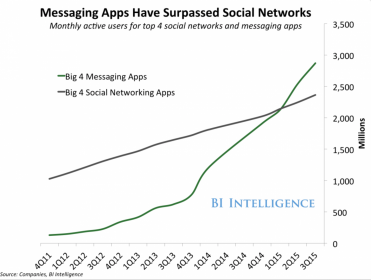A regular contributor to B&T, Graham Christie (Pictured Below), former CEO at Big Mobile and now principal at independent consultancy The Golden Acre, signals an important CX shift well and truly underway…
In Australia and the rest of APAC, digital transformation is being significantly hampered by the persistent reluctance to integrate mobile fully into the Customer strategy, relying on outdated App models, and neglecting the fundamental change in the way people manage their content and brand choices.
One of the main things we’re witnessing as a consequence, is the death of the mobile App, at least as we know it. Outside of activities such as, banking, real estate, and entertainment, it’s undeniable that people think apps are plain difficult to find, only real brand fans bother downloading them anyway, and those that do use sparingly or never a few weeks afterwards.
Consider the chronology of the relationship between mobile and marketing. Starting off with SMS, then moving to a pre iPhone mobile web (yes – this was a thing), the arrival and explosion of smartphone apps and content, social media networks with personal updates shifting with the consumer to mobile, and now messaging apps overtaking those social networks.
The typical brand focused iOS/Android application of recent times has essentially sought to aggregate these elements, and numerous others, in the one ‘super-bundled’ place, but to be hard-nosed, this archetype that populates app stores in such great numbers, few consumers really care about. The next stage is upon us.
Consumers are ‘unbundling’ their usage patterns, selecting platforms and technologies to meet their specific needs and are looking to control them far more actively. They are accepting of an SMS from their bank, and email from their energy provider, a push notification from a fashion retailer, messages from their friends, and news headlines they want to see, all delivered to their mobile’s home screen. They prioritise when and how often, and are as happy to delete, as they are to set up. People are increasingly looking for a ‘quick check-in’ to the things that matter to them. For instance, in a report by eDigital Research, a USbank recorded an SMS open rate of 60 per cent with a click-to-open rate of 37.5 per cent.
Mobile usage increased 13 percent, and retention rates increased an estimated 5 percent. Engagement most marketing channels would love. In a separate piece in Forrester’s “Five Mobile Myths From A Millennial’s Perspective,” a survey revealed that 57 per cent of that segment were likely to take action after receiving a notification from a retailer for instance. The Report cautions marketers however to ensure any messaging strategy has at it’s foundation, relevancy. Well of course, but I would add that this relevancy needs to work harder than the intelligence leveraged in ad targeting given the sanctity of the home screen.
In life, some of the best conversations are short ones, certainly they can be the most effective. So adapting CX strategy to integrate this element means working harder on at least four key elements such as; what you know about them (who they are and their usage behaviours), what they need (what utility you are to them), when and where they might like to hear from you (recency), and effectiveness (analytics and evaluation). Achieve this and you’re more likely to get interaction on those notifications, which means the customer essentially qualifies themselves, before you take them elsewhere to continue to sell or service.
There are clears signs this ‘unbundling’ is happening at the big end of town. Google has been testing click-to-message through Adwords that connects (via SMS) advertisers directly with consumers. This as a response to Facebook’s Messenger upgrades that really talk more to customer journeys, not advertising per se.
However, the legacy of most marketing departments organisationally and the agency ecosystem, is that both promote separation not unification, hence why there is so much angst around ‘transformation’ and the collision of adtech with martech. The table stake of any approach is that the CEO must enthusiastically sponsor it, the process be ruled by the CMO, and it has to start and end with the consumer with technology being the agile enabler.
In summary, it was simple when all we needed to do was keep going with search, desktop and traditional media, and then build a fancy App, but this is very far from the case today. The behavioural changes taking place highlight the rather inconvenient reality that marketers and their agencies need to work harder to ‘unbundle’ the consumer experience to be able to engage productively rather than just exhibit noise. Using data to understand the role of messaging, (in it’s very broadest sense), in the day to day lives of the mobile consumer, and developing an all-inclusive strategy is actually where the heavy lifting and consequentially the great customer advocacy rewards in digital marketing lie. It’s not simply Social, and it’s not the super-shiny new thing getting pitched to you.










